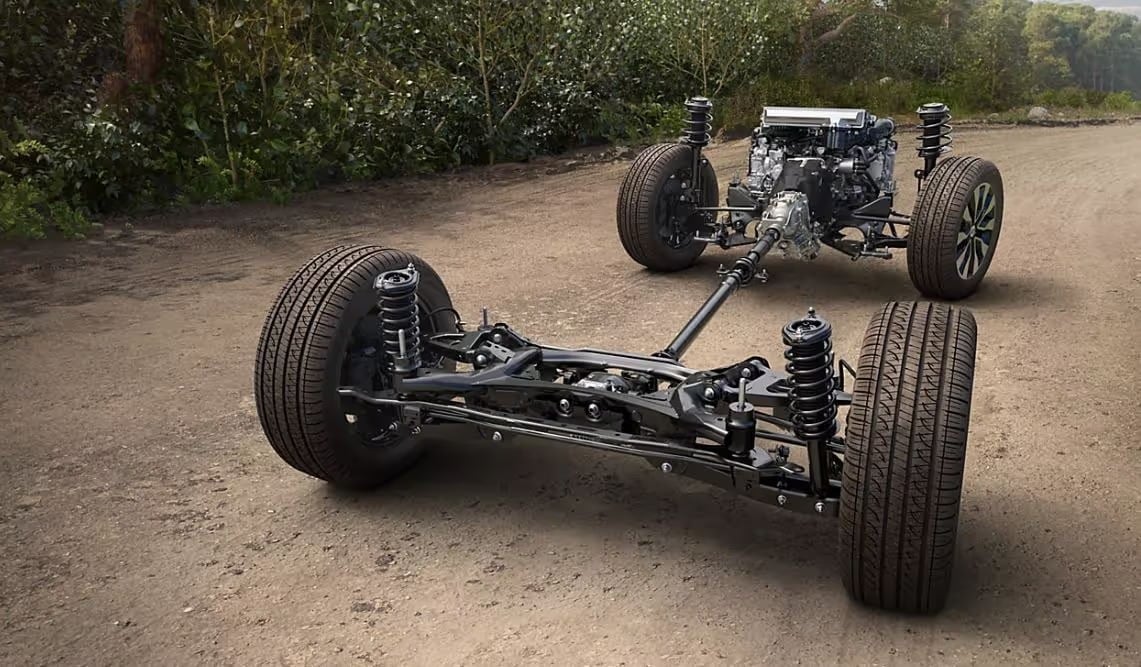
Learning about the difference between 4WD and AWD helps you choose the right drivetrain for your driving needs. Many drivers wonder, what is all-wheel drive, and how does it compare to four-wheel drive? While both systems send power to all four wheels, they operate differently and serve distinct purposes. Some also compare the RWD vs AWD difference when deciding on a vehicle, as rear-wheel drive delivers a sportier feel while AWD increases stability. Knowing these differences ensures you select the best drivetrain for your lifestyle!
Pro Tip: Findlay Subaru Las Vegas has a nice collection of Symmetrical All-Wheel Drive vehicles that are worth checking out right now!
Also Read: Uncovering the Subaru logo and its Meaning
The Difference Between 4WD and AWD
The difference between 4WD and AWD comes down to how each system distributes power and their ideal driving conditions. Four-wheel drive (4WD) is designed for off-road adventures, providing maximum traction on rugged terrain. It typically uses a transfer case to engage all four wheels, sending equal power to the front and rear axles. Many 4WD cars let you switch between two-wheel drive and four-wheel drive, making them great for tackling dirt trails, deep snow, and uneven landscapes.
All-wheel drive (AWD) operates differently, as it constantly sends power to all four wheels for enhanced stability. What is all-wheel drive? It’s a system that adjusts power distribution automatically based on road conditions, improving grip on wet or icy surfaces. Unlike a traditional 4WD system, an AWD vehicle doesn’t require manual engagement, making it ideal for daily driving in unpredictable weather. Many AWD cars feature advanced traction control systems that optimize performance on highways and city streets.
Choosing between AWD cars and 4WD cars depends on your driving habits. If you frequently explore off-road trails or drive in extreme conditions, a 4WD vehicle delivers the durability and power needed for tough terrain. On the other hand, if you want improved traction for everyday driving, an AWD system ensures a smooth and controlled ride. Understanding the difference between 4WD and AWD helps you select the right vehicle for your lifestyle.
Modern vehicles offer a variety of drivetrain options to match different needs. Many SUVs, crossovers, and sedans come equipped with AWD for added security on slippery roads, while pickup trucks and off-road SUVs often feature 4WD for rugged performance. Knowing what is all-wheel drive and how it compares to traditional 4 wheel drive system gives you the confidence to make an informed decision when shopping for your next vehicle.
How About RWD vs AWD Difference?
Now that you know the difference between 4WD and AWD, it’s time to understand the RWD vs AWD difference. Rear-wheel drive (RWD) sends power to the back wheels, creating a balanced and engaging driving experience. Many performance vehicles use RWD because it enhances acceleration and handling, making every turn feel more precise. However, RWD struggles with traction on wet or icy roads, which can make driving more challenging in harsh weather conditions.
As mentioned previously, all-wheel drive (AWD) improves stability and control by sending power to all four wheels. Many AWD cars adjust power distribution automatically, giving you extra confidence on slippery or uneven surfaces. Unlike RWD, which relies on rear wheels for propulsion, AWD continuously adapts to changing road conditions. This feature makes AWD a great choice for drivers who need extra grip in rain, snow, or light off-road situations.
Some drivers prefer the sporty feel of RWD, while others appreciate the added security of AWD. The RWD vs AWD difference comes down to how each system handles traction and performance. RWD cars provide a thrilling, responsive drive, while AWD cars offer a more controlled and stable ride in various conditions. Understanding these differences allows you to pick the drivetrain that matches your driving style.
The decision to make between RWD and AWD depends on how you plan to use your vehicle. For those who prioritize sharp handling and rear-wheel power, RWD gives you a dynamic driving experience. On the other hand, for enhanced traction and all-weather capability, AWD cars deliver the confidence you need.
Is it Possible to Have 4WD and AWD in One Car?
Understanding the difference between 4WD and AWD helps you see how each system operates and why combining them in one car is uncommon. Four-wheel drive (4WD) delivers power evenly to all four wheels, giving you maximum traction on rough terrain. Many 4WD cars allow you to engage or disengage the system depending on road conditions, making them ideal for off-road adventures. However, 4WD is not designed for continuous use on paved roads, as it can cause drivetrain strain and reduce efficiency.
All-wheel drive (AWD) functions differently, sending power to all four wheels automatically based on road conditions. Many AWD cars use sensors to detect wheel slip and adjust torque distribution, improving stability on wet or icy roads. Unlike 4WD, AWD remains active at all times, giving you seamless traction without requiring manual engagement. This makes AWD a great choice for drivers who need extra confidence in changing weather conditions.
Some modern vehicles offer advanced drivetrains that blend aspects of both systems. Certain SUVs and trucks feature AWD for regular driving and a selectable 4WD mode for extreme conditions. These models give you the flexibility of automatic power distribution with the option to lock all four wheels when extra traction is needed. This combination provides the best of both worlds, allowing you to adapt to various terrains with ease.
Choosing between AWD cars and 4WD cars depends on your driving environment and performance needs. If you want a system that adjusts power without input, AWD delivers smooth handling and traction in daily driving. If you need extra durability and control for off-road adventures, 4WD provides the rugged capability required for tough terrain.
What is Symmetrical All-Wheel Drive?
Subaru’s Symmetrical All-Wheel Drive gives you balanced power distribution and superior traction in all driving conditions. Unlike traditional AWD systems, it sends power evenly to all four wheels, helping you maintain control on slippery roads and rough terrain. The system’s design places the engine, transmission, and drivetrain in a straight line, lowering the vehicle’s center of gravity for better stability. This setup enhances handling, allowing you to navigate curves and unpredictable road conditions with confidence.
You experience improved grip and responsiveness because the system continuously adjusts power to the wheels with the most traction. Subaru engineers designed it to work seamlessly with the brand’s Boxer engine, ensuring smooth and efficient performance. Subaru’s Symmetrical All-Wheel Drive remains active at all times, giving you immediate traction without requiring manual engagement. This technology makes every drive safer and more controlled, no matter the road or weather conditions.
Conclusion
Understanding the difference between 4WD and AWD helps you choose the right vehicle for your driving conditions. AWD cars provide continuous traction for smooth handling on various road surfaces, while 4WD cars offer extra control for off-road adventures. Knowing what is all-wheel drive and how it compares to four-wheel drive ensures you get the best performance for your needs.
If you are looking to get a vehicle but working on a tight budget, see Findlay Subaru Las Vegas’ value-for-money used cars and 15k and under deals!
Read Next: The 2025 Subaru Outback Safety Features





